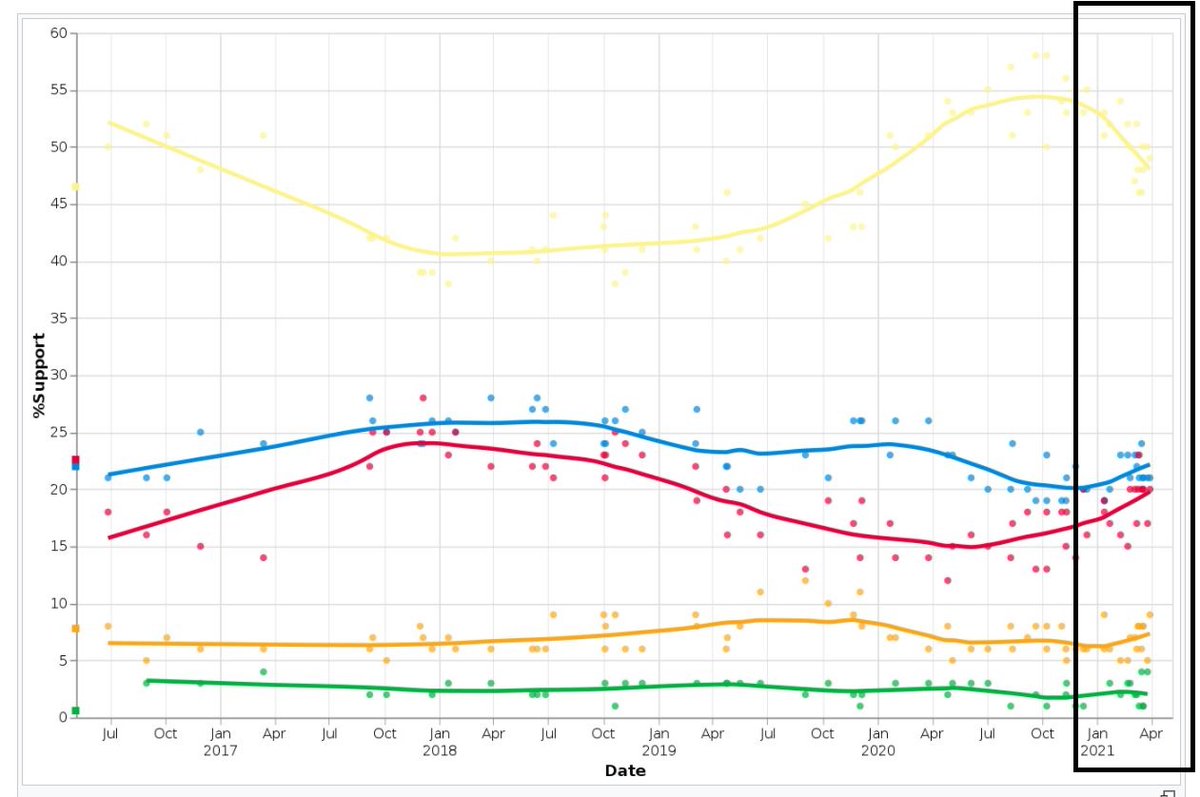
Interesting in lots of ways.
Most obvious is Alba has further eroded SNP support on the list, but at only 3% unlikely to get anyone elected.
They might take enough support from the SNP to stop them getting list MSPs, while not getting enough switchers to get any Alba elected.
Most obvious is Alba has further eroded SNP support on the list, but at only 3% unlikely to get anyone elected.
They might take enough support from the SNP to stop them getting list MSPs, while not getting enough switchers to get any Alba elected.
https://twitter.com/BritainElects/status/1377673249304276993
Also: constituency vote indicates that the SNP have not managed to turn the Hamilton Report moment into a strategic reset. Instead this poll, much like the general trend since October last year, suggests a continued slow unravelling of SNP support in the constituency numbers.
Only question is, will SNP support unravel fast enough to have an impact in the election in five weeks time? That I don't know.
Last observation: I'm not surprised the Green vote has held up. I never expected Alba to steal their voters. Type of voter who votes Green backs the Gender Reform, the Hate Crime legislation - the sorts of nationalist voters Alba appeals to oppose those things.
• • •
Missing some Tweet in this thread? You can try to
force a refresh














